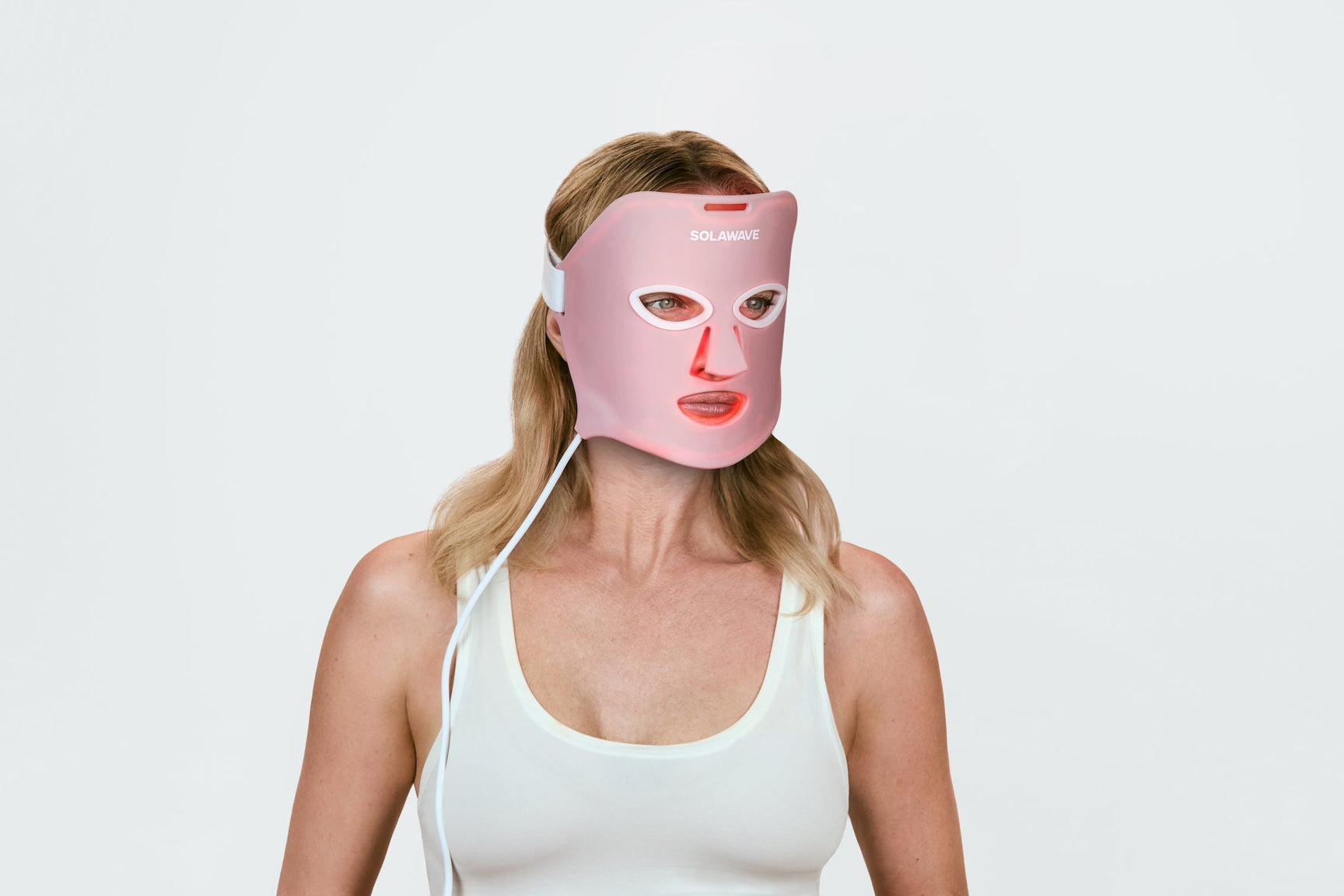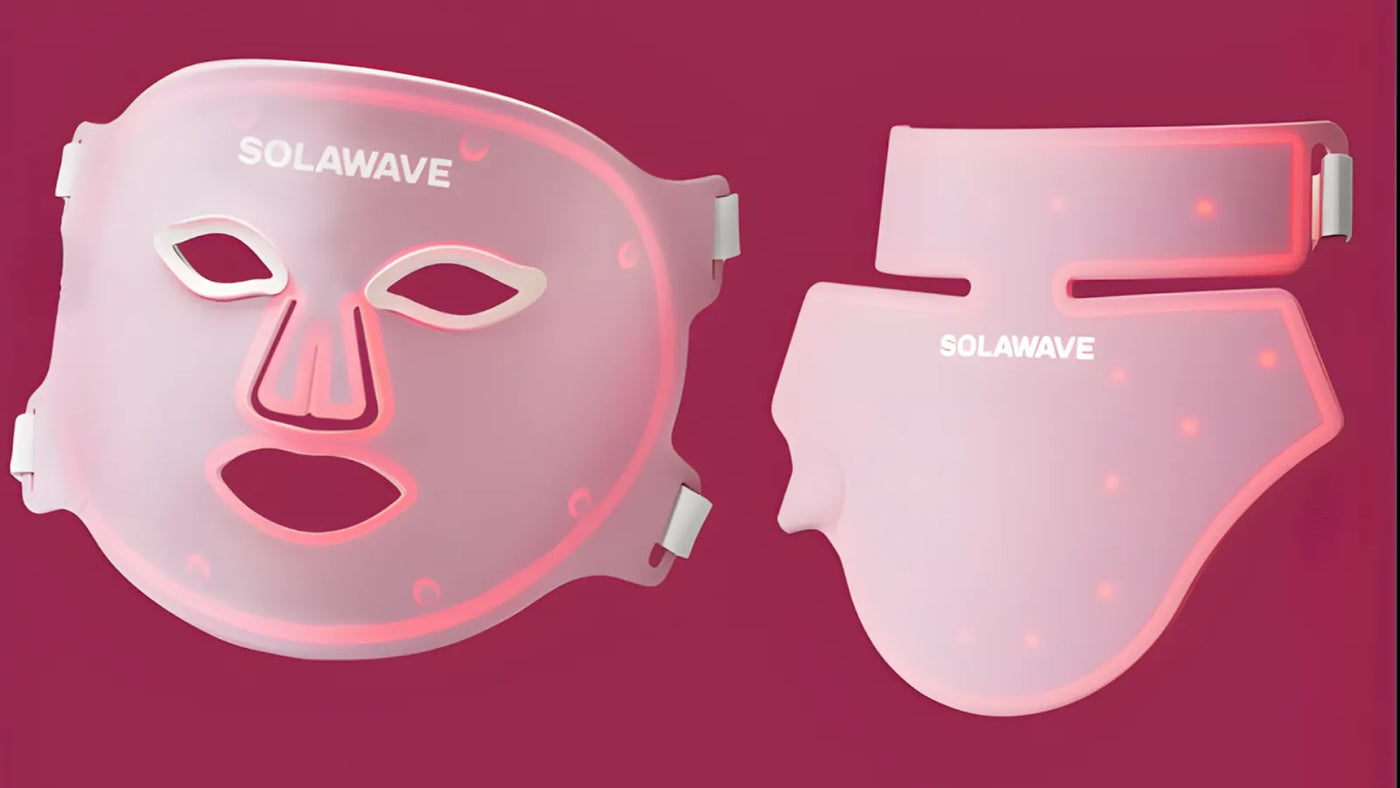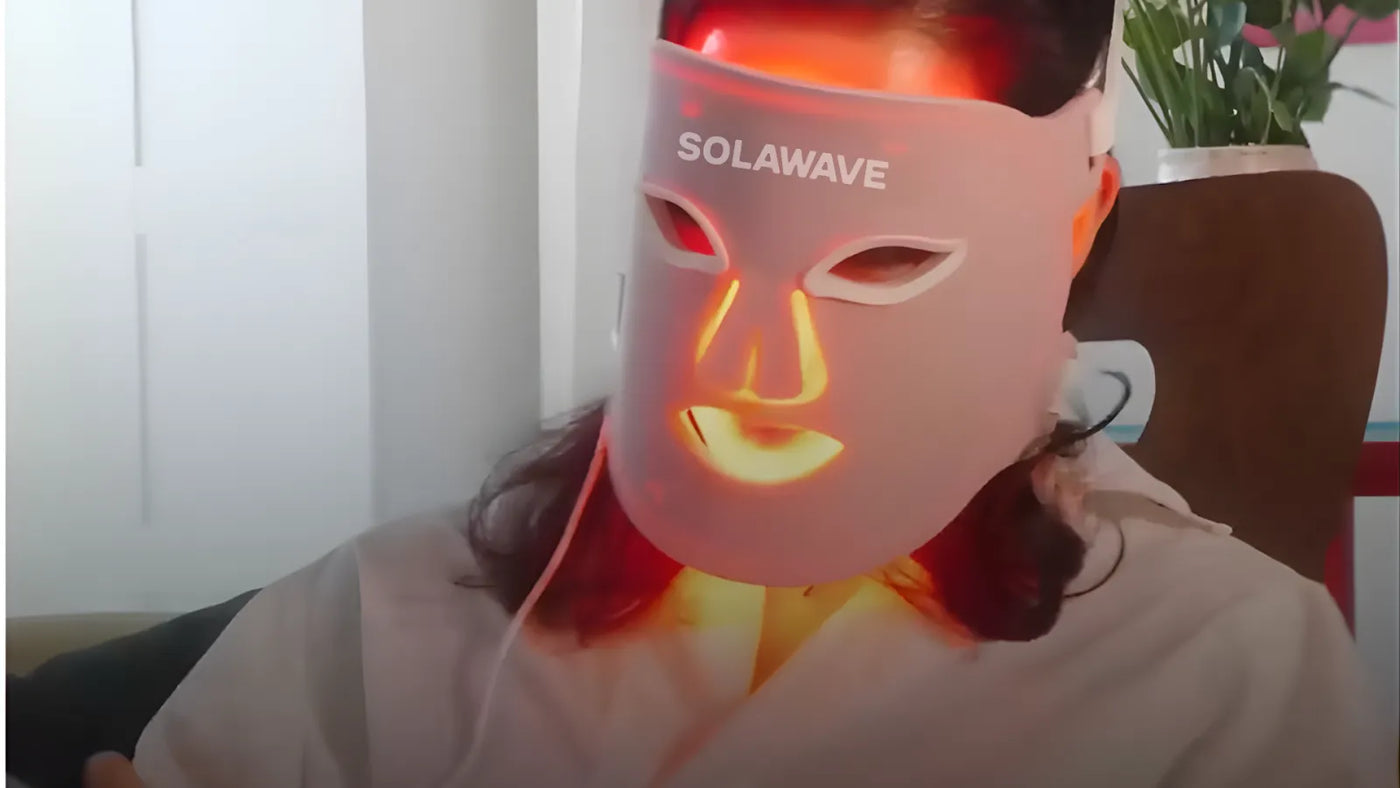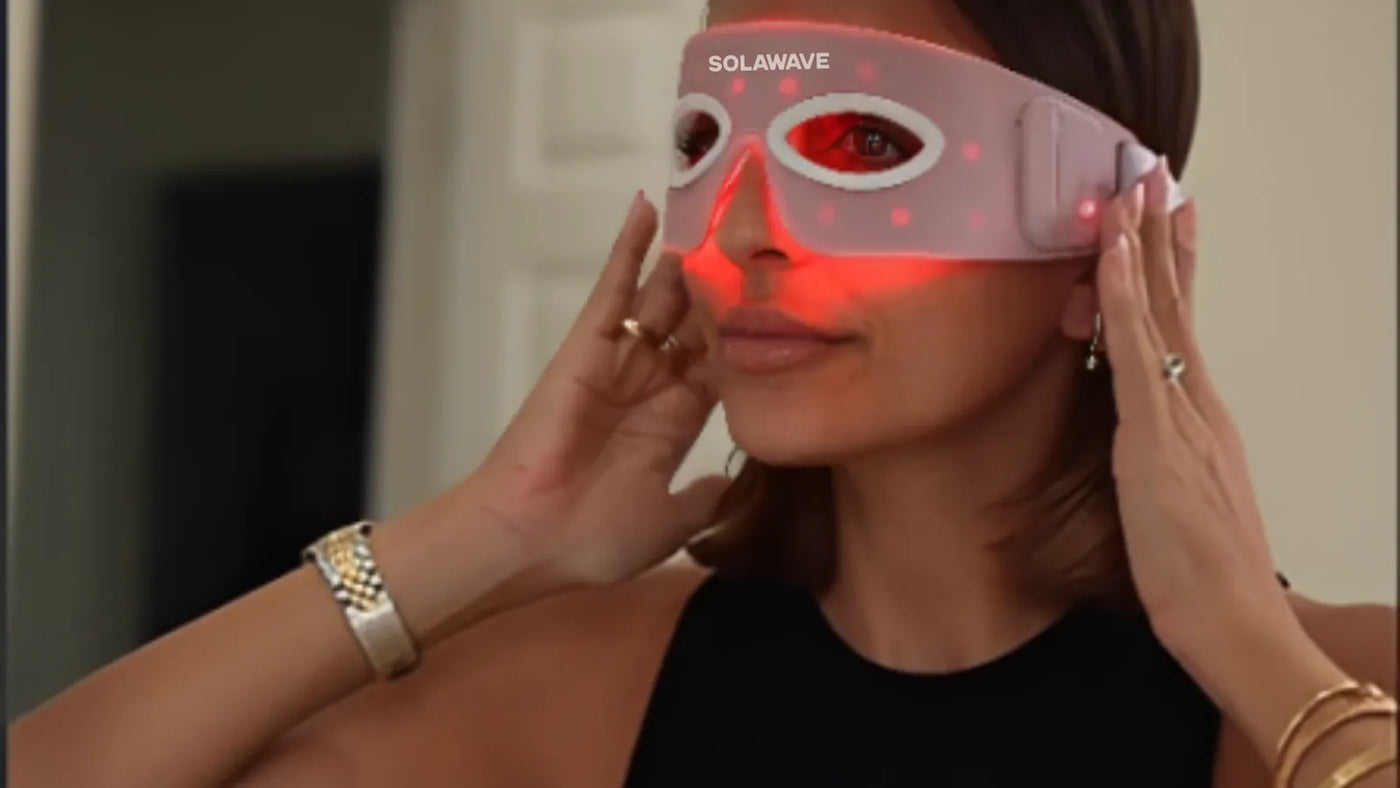

Red Light Therapy for Cold Sores: Will It Help?
Cold sores are a common and often frustrating skin issue that can disrupt your daily life, causing discomfort, embarrassment, and inconvenience. These small, fluid-filled blisters typically appear around the lips or mouth and can make everyday activities like eating, talking, or even smiling uncomfortable. As you search for ways to manage or prevent cold sores, you might come across red light therapy, a wellness trend gaining attention for its potential skin benefits.
Red light therapy is often promoted for a variety of skin concerns, but it’s important to understand its limitations. While it may offer some benefits for skin appearance and anti-aging, red light therapy is not a cure or treatment for cold sores. If you’re looking for effective ways to handle cold sores, we'll expand more on some proven methods below, but you should also consult with your healthcare professionals for best results.
What Are Cold Sores?
Cold sores, also known as fever blisters, are small, painful blisters that typically form on or around your lips and mouth. They are caused by the herpes simplex virus type 1 (HSV-1), a highly contagious virus that remains in your body for life once you’ve been infected. While cold sores are most commonly associated with the mouth, they can occasionally appear on other areas of the face or even inside the nose.
The first sign of a cold sore is often a tingling, itching, or burning sensation in the affected area. Within a day or two, small fluid-filled blisters appear. These blisters may cluster together, eventually breaking open and forming a shallow, open sore. After a few days, the sore will crust over and begin to heal, usually resolving within one to two weeks. During this time, you may experience discomfort, pain, or sensitivity, especially when eating or talking.
Cold sores are highly contagious, especially when the blisters are open and oozing. The HSV-1 virus spreads through close personal contact, such as kissing, and/or sharing utensils, towels, or lip balm, and even through skin-to-skin contact during an outbreak. The virus can also still be transmitted even when sores are not visible, as HSV-1 can be present in saliva and on the skin.
Most people are first exposed to HSV-1 during childhood, often through nonsexual contact. After the initial infection, the virus remains dormant in nerve cells and can reactivate later, leading to recurrent outbreaks. Triggers for reactivation can include stress, illness, fatigue, sun exposure, or hormonal changes.
What Causes Cold Sores?
Cold sores are caused by the herpes simplex virus type 1 (HSV-1), a widespread and highly contagious virus. Once you are exposed to HSV-1, the virus enters your body through small breaks in the skin or mucous membranes, usually around the mouth. After the initial infection, HSV-1 travels to nerve cells, where it remains dormant for life. Even if you don’t have visible sores, the virus can reactivate and cause new outbreaks at any time.
Several factors can trigger the reactivation of HSV-1 and lead to cold sore outbreaks. Common triggers include:
-
Stress: Physical or emotional stress can weaken your immune system, making it easier for the virus to become active.
-
Illness: Colds, fevers, or other infections can prompt an outbreak, which is why cold sores are sometimes called “fever blisters.”
-
Sun Exposure: Ultraviolet (UV) rays from the sun can irritate the skin and trigger cold sores, especially on the lips.
-
Fatigue: Lack of sleep or exhaustion can lower your body’s defenses and increase the risk of an outbreak.
-
Hormonal Changes: Fluctuations in hormones, such as those during menstruation, pregnancy, or menopause, can also play a role.
-
Injury to the Skin: Cuts, burns, or other trauma to the lips or mouth area can activate the virus.
Anyone who has been exposed to HSV-1 is at risk for developing cold sores, but some people are more susceptible to frequent outbreaks. Individuals with weakened immune systems — such as those undergoing chemotherapy, living with HIV, or taking immunosuppressive medications — may experience more severe or recurrent cold sores. Additionally, people with high levels of stress or frequent sun exposure may notice more frequent flare-ups.
What Is Red Light Therapy?
Red light therapy is a non-invasive treatment that uses specific wavelengths of red light, typically between 630 and 700 nanometers, to stimulate biological processes in the skin. This process, known as photobiomodulation, allows red light to penetrate the skin’s surface and reach the dermis, where it can influence cellular activity. One of the primary effects of red light therapy is the support of healthy collagen production — a protein that provides structure and firmness to your skin. As natural collagen production decreases with age, red light therapy is often used to help rejuvenate the skin, reduce the appearance of fine lines and wrinkles, and improve overall skin texture.
In the world of skincare and wellness, red light therapy has gained popularity for its ability to visibly revitalize aging skin, diminish redness and blemishes, and promote a more radiant-looking complexion. Many people use it to address concerns like uneven skin tone, post-acne marks, and puffiness. At-home red light therapy devices have made this technology more accessible, allowing you to incorporate treatments into your regular skincare routine without the need for professional appointments.
Scientific studies have shown that red light therapy can be effective for improving skin appearance, particularly when it comes to reducing signs of aging and supporting healthy collagen levels. However, results can vary depending on the device used, the consistency of treatments, and individual skin types.
It’s important to note that while red light therapy is generally considered safe when used as directed, it is not a cure or treatment for viral infections like cold sores. Some users may experience mild side effects such as temporary redness or dryness, and those with certain medical conditions or sensitivities should consult a healthcare professional before starting treatment.
Overall, red light therapy offers a promising, science-backed option for enhancing skin health and appearance, but it has clear limitations and should not be relied upon for managing or treating medical conditions such as cold sores.
Why Red Light Therapy Isn’t a Solution for Cold Sores
While red light therapy has shown benefits for general skin health and rejuvenation, there is no clinical evidence supporting its use for cold sores. Cold sores are caused by the herpes simplex virus type 1 (HSV-1), a viral infection that requires targeted antiviral approaches for effective management. Red light therapy works for anti-aging benefits by supporting healthy collagen production in the skin, but it does not address the underlying viral cause of cold sores.
Because red light therapy cannot target or eliminate viruses, it is not capable of curing, treating, or speeding up the healing of cold sores. The herpes simplex virus remains dormant in nerve cells and can reactivate due to various triggers, leading to recurring outbreaks. Only antiviral medications — either topical or oral — have been proven to reduce the severity and duration of cold sore outbreaks.
Using red light therapy on active cold sores may also carry potential risks. The heat and stimulation from the device could irritate the already sensitive skin, potentially increasing discomfort or prolonging the healing process. Additionally, there is a risk of spreading the virus to other areas of your skin or to the device itself, which could lead to further outbreaks or cross-contamination.
If you are experiencing cold sores, it’s best to use evidence-based treatments and consult with a healthcare professional for the right course of action. Red light therapy may offer benefits for other skin concerns, but it should not be considered a solution for cold sores.
Proven Methods for Tackling Cold Sores
When it comes to managing cold sores, relying on proven, evidence-based methods is essential for reducing discomfort and minimizing the duration of outbreaks. Here are the most effective strategies you can use (but make sure you consult with your healthcare provider first!).
FDA-Approved Antiviral Medications
Prescription antiviral medications are the gold standard for treating cold sores. These include topical creams like acyclovir and penciclovir, as well as oral medications such as acyclovir, valacyclovir, and famciclovir. These antivirals work by interfering with the herpes simplex virus’s ability to replicate, which can help shorten the duration of an outbreak and reduce the severity of symptoms. For best results, start these medications at the very first sign of a cold sore, such as tingling or itching.
Over-the-Counter Treatments and Their Effectiveness
Several over-the-counter (OTC) products are available to help manage cold sore symptoms. Creams and ointments containing docosanol (brand name Abreva) can help speed up healing if applied early. Other OTC options, such as pain-relieving gels, patches, and lip balms, can provide temporary relief from discomfort, dryness, or cracking. While these treatments may not eliminate the virus, they can make outbreaks more manageable.
Importance of Early Intervention
Acting quickly at the first sign of a cold sore can make a noticeable difference in how long the outbreak lasts and how severe it becomes. Starting antiviral medications or applying OTC creams during the initial tingling or itching stage can help limit the spread and intensity of the blisters. Early intervention is key to minimizing both symptoms and healing time.
Lifestyle Changes to Reduce Outbreaks
Certain lifestyle adjustments can help reduce the frequency and severity of cold sore outbreaks. Managing stress through relaxation techniques, regular exercise, and adequate sleep can strengthen your immune system and lower your risk of reactivation. Protecting your lips from sun exposure by using a lip balm with SPF can also help prevent outbreaks triggered by UV rays. Avoiding known personal triggers, such as fatigue or illness, is another important step.
Conclusion
Cold sores are a common viral condition caused by the herpes simplex virus type 1, often triggered by factors like stress, illness, or sun exposure. While red light therapy has gained popularity for its aesthetic skin benefits, there is no scientific evidence supporting its use for treating or curing cold sores. Instead, proven methods such as antiviral medications, early intervention, and healthy lifestyle choices remain the most effective ways to manage outbreaks. If you experience frequent or severe cold sores, consult a healthcare professional to find the best treatment plan for your needs and to ensure you’re using safe, evidence-based strategies.
Disclaimer: This article is intended for informational purposes only, and should not be interpreted as medical advice or guidance. Always seek medical advice and care from a trusted healthcare professional.
Sources:






















